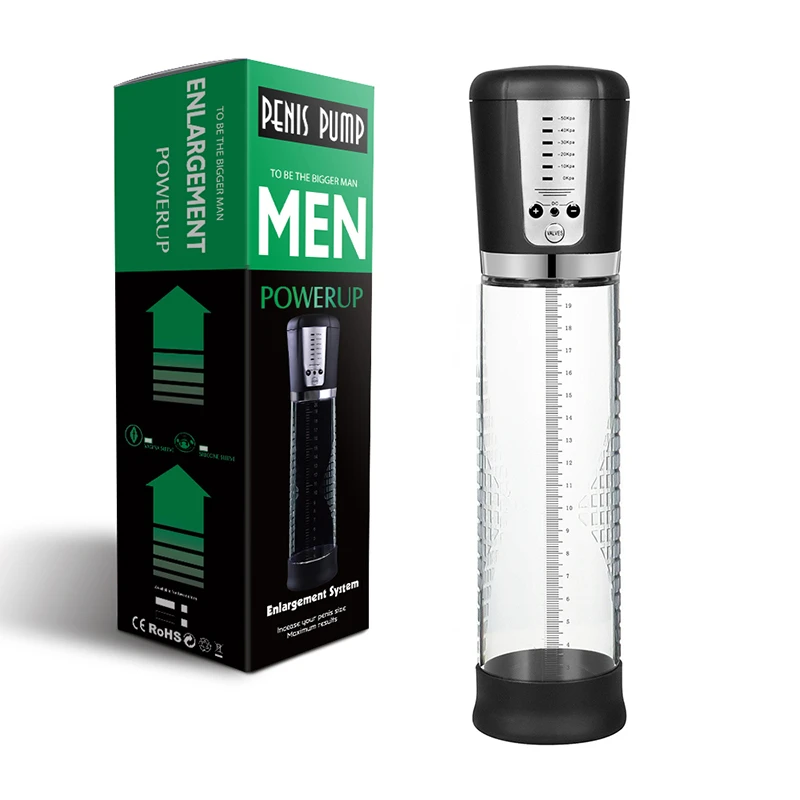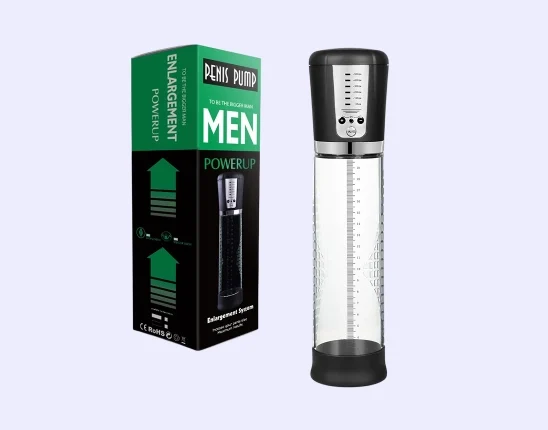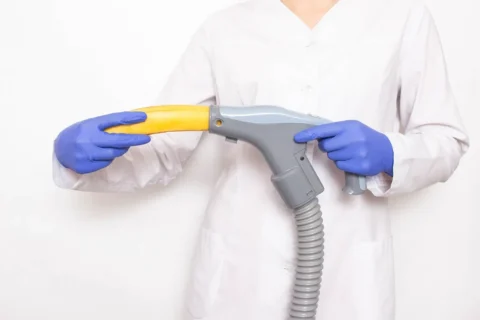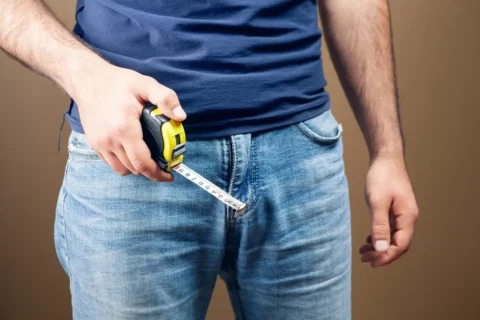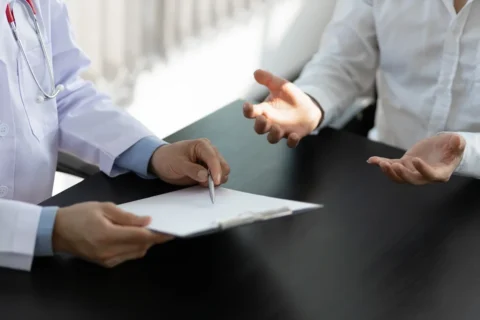A penis pump is a vacuum erection device used to induce erection. More than just a simple sex toy, a penis hand pump is important in sexual health as it provides a safer way to treat erectile dysfunction (ED). But as the medical scene becomes more advanced, penis pumps can now be implanted through surgery.
So what happens in a penis pump surgery? A penis pump surgery involves surgically placing a penile prosthesis into the penis to facilitate and maintain erectile function during a sexual activity. This is an FDA-approved internal penis implant that comes in many types with different functions and lasts for up to a couple of years.
Penis Pump Surgery: What You Need to Know
Medical devices called a penile implant or penile prosthesis are surgically implanted into the corpora cavernosa or chambers of the penis. As early as 1973, a group consisting of doctors and an engineer performed the first penile prosthesis surgery.
The first internal penis pumps were implanted 9 years before Geddings Osbon was granted FDA clearance to market external penis pumps in 1982, making penile implants supersede external pumps as the oldest effective and safe erectile dysfunction treatment.
Even if internal penis pumps are older than external penis pumps, medical protocol requires a healthcare provider to initially prescribe non-invasive treatments like the latter. Since implanting an internal pump is far more invasive than simply using an external pump, it will only be recommended once the latter doesn’t work out.
The suitable candidates for penile implantation are as follows:
- Those with ED who haven’t responded to non-invasive treatment and conservative therapy options.
- Those who have Peyrionie disease with ED.
- Transgender people who had a gender-affirming surgery.
Aside from being another option to treat ED, penile implant surgery may also be used on trangsender people to allow them to have penetrative sex. Below are the results of the surveys conducted on transgender people regarding their feedback on penile prosthesis implantation:
- 93% satisfaction rate
- 85 to 93% were able to have penetrative sex after the implantation
- 60% were able to reach orgasm after the penile prosthesis implantation
What is a Penis Pump Implant
Healthcare professionals will use implants based on the needs and preferences of each patient. There are 2 types of a penile implant: inflatable and malleable implants. Make sure that the advantages and disadvantages of both are properly discussed and weighed down before you choose between those options.
Furthermore, before deciding on which implant will be most suitable, people and their doctors should consider the following factors:
- Penis size
- Size of the glans and scrotum
- Presence of a colostomy
- Circumcision
- History of kidney transplant or kidney stone
- History of abdominal or pelvic surgery
- Over health and existing medical issues
Once an implant is inflated or moved into position, it should feel like a regular erection, both in terms of its girth and stiffness. Over 80% of the people with three-piece inflatable penile implants and their partners reported high satisfaction rates and a higher quality of life in a study on their success rates over 5 years.
1) Inflatable Penis Pump
Depending on the model used by your healthcare provider, an inflatable penile implant may consist of 2 to 3 cylinders that are surgically implanted in your body. The fluid that circulates between the pump and reservoir is called a saline solution, which hardens the penis and mimics an erection. The 3 types of inflatable implants are as follows:
- One-piece inflatable. The saline solution is merely contained at each end of the cylinder in the penis.
- Two-piece inflatable. A pump located in the scrotum contains the saline solution.
- Three-piece inflatable.This type of inflatable implant has the complete set of the implant which includes a reservoir in the abdomen which contains the saline solution, and a pump. Compared to the other types of inflatable implants, a three-piece inflatable implant induces an erection that feels more like a natural erection.
2) Malleable Penis Pump
The malleable penis implant also consists of 2 cylinders, which are always hard and firm, yet flexible. There’s no pumping mechanism involved in this kind of implant, only cylinders inserted into the chambers of the penis that are semi-permanently hard.
How it works is that the rods are simply bent upward if you want to create an erection, and then bent downward to hide the rods under clothing. Malleable penis implants are easier to manipulate than an inflatable penile implant or even an external penis pump. However, men may find it difficult to conceal it because the rods are always hard.
Surgical Penis Pump Procedure
Before the procedure, your healthcare provider must properly discuss the instructions that are necessary to abide with such as the following:
- No eating or drinking for a specific amount of time before the penile implantation surgery.
- Shave or clean the penile area, including the base and the testicles.
- Make sure that someone is available to accompany you during the procedure and drive you home afterwards.
How Does a Penis Pump Get Installed and How It Works
An incision will be made in the penis below the head, and the implant will be placed inside. The size of the implant is customized based on both body and penis size. Prior to surgery, a catheter is placed to collect urine and an intravenous line (IV) is attached for required medications to facilitate the surgery.
Malleable penile prosthesis only requires placing 2 semi-rigid rods into the penis, and then the incisions are closed. But as for inflatable penis implants, the process may take longer. Small cuts in the scrotum will also be made to place the pump and the valve, which are essential for inflatable penile prosthesis.
It contains a reservoir and a pump which are inserted in the penis and connected by a tube that separates the reservoir of fluid. This reservoir is implanted right under your lower abdominal muscles, with a pump connected to it and placed under the scrotal sac between the testicles.
The pump is then pressed to inflate the prosthesis by transferring the fluid from the reservoir to the implanted cylinders in the penis, which will then maintain the erection. The erection will be deflated once a deflation valve is pressed at the base of the pump to return the fluid to the reservoir.
The procedure may take place in a hospital or an outpatient surgery center. Although it takes place under anesthesia, this is an outpatient procedure which means that a patient may go home the same day as the procedure. Moreover, it takes about 1 to 2 hours to finish the procedure.
Healing Time for Penis Pump After Surgery
After this procedure, people can go home the same day. The patient may be prescribed pain medication to relieve discomfort, as well as antibiotics to prevent infection. The removal of stitches and resumption of intensive activities vary depending on the appropriate recovery period for each individual. Additional instructions may also be provided such as the following:
- No sexual intercourse for at least 4 to 6 weeks after the prosthesis surgery
- Keep the penis pointed toward your belly button to maintain its desirable curve
- Instructions for using the implant
- Instructions for practice exercises involving the inflation and deflation of the implant each day to stretch the surrounding penile tissue
Results from Penis Pump Surgery
Penile implants reportedly improved the erectile dysfunction condition and overall quality of life of patients who had it. The expected lifespan of a penile implant depends on several factors that may be controlled or uncontrolled by an individual.
One of the most common reasons for a shorter inflatable penile implant lifespan is a mechanical failure. A mechanical failure is usual within 3 to 7 years after the penile implant surgery. Specifically, if inflatable penile prosthesis reaches its 10th year mark, the mechanical survival rate of such is increased at 78 to 85%.
Meanwhile, transgender people who undergo penile implant surgery may expect a higher failure rate within 5 years at 75 to 78%. Moreover, penile prosthesis isn’t expected to result in an increased penis size. If anything, one of the side effects of a penile implant surgery is actually penis shortening. For concerns over penis size, please consult your healthcare provider for accurate and reliable treatments such as a revision surgery.
Safety Concerns for Surgically Installed Penis Pump
Most people experience a restored sexual function after 6 weeks of the procedure, but because penile prosthesis surgery is still a surgical procedure, they may still be vulnerable to the following adverse effects such as the following:
- Floppy glans syndrome
- Change in penis size
- Post-operative pain
- Mechanical penile implant failure
- Lack of penile sensation
- Infection
- Internal erosion or adhesion due to infection
- Scar tissue formation
- Displacement of pump or reservoir
- Urinary tract infection
- Urinary incontinence
Make sure that you have access to immediate emergency care after your penile implant procedure to avoid the risk of further adverse effects due to infection or other causes.
Best Surgically Implanted Pumps for Men’s Penis at FACE Med Store
Penile implant surgery is an effective sexual dysfunction treatment for cases of erectile dysfunction in which a patient has an erection problem. Penile implants or penile prosthesis are devices that are surgically implanted into the penis to mimic a natural erection. Despite the fact that a penile implant is the most invasive ED treatment option, penis pump surgery still has the highest satisfaction rate among any other treatments for erectile dysfunction.
At FACE Med Store, we provide the best and latest instruments for medical treatments and surgical procedures. Additionally, we provide our clients with competent customer service and transparency to help them choose the products that are most suitable for their business and personal needs. Contact us for more information about our store and products.
